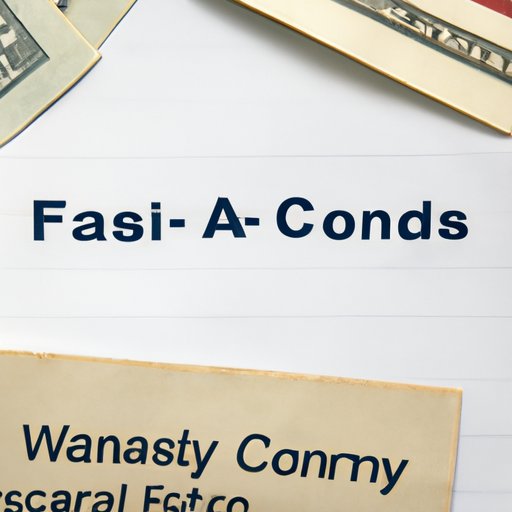
Introduction
Financial aid is essential for many students who want to attend college but cannot afford to finance it solely themselves. Scholarships, grants, and loans are common ways to receive financial aid, and one of the most popular ways to receive financial aid is through the Free Application for Federal Student Aid (FAFSA). However, with so many different forms of financial aid available, it can be confusing to understand how each option works. In this article, we will take a closer look at FAFSA, what it entails, and whether it can be considered free money.
The Truth About FAFSA: Separating Fact from Fiction
There are several misconceptions about FAFSA that have been circulating, and it’s important to separate fact from fiction. One of the most common misconceptions is that FAFSA is free money, and doesn’t need to be paid back. This is not entirely true, as while some types of FAFSA funding can be considered free money, such as grants, others, such as loans, must be paid back in the future.
Another common misconception is that FAFSA is only available to low-income families. This is not true either – anyone can fill out the FAFSA, regardless of income or financial situation.
It is essential to understand the realities of FAFSA so that students can make informed decisions about how to finance their education effectively.
Maximizing Your FAFSA for Financial Aid: Understanding the Different Types of Funding
There are several types of funding available through FAFSA, which can be broken down into three categories: grants, loans, and work-study programs. Grants are considered to be free money, meaning that they don’t have to be paid back. Loans, on the other hand, must be paid back eventually, along with interest.
Work-study programs are typically part-time jobs that students use to pay for their education. These jobs are funded by the government and are reserved for students with financial need. Eligibility typically depends on financial need and is granted on a first-come, first-served basis.
Navigating the FAFSA: How to Avoid Paying More Than You Should
Completing the FAFSA accurately is essential to maximize eligibility for free money. Tips to ensure that the application is filled out properly include filling it out as soon as possible, applying for every grant, scholarship or loan you that you might qualify for, and being aware of eligibility requirements.
Another important strategy for maximizing eligibility is understanding the Expected Family Contribution (EFC). This is an estimate of how much a family can contribute towards college expenses. The lower your EFC, the more eligible you are for grants and other types of free money.
Financial Aid for College: Understanding Your Options with FAFSA
FAFSA is an important tool in helping students finance their college education, but it is not the only tool available. Other options include scholarships, work-study opportunities, and private loan options. Each option has its advantages and disadvantages, and the best fit for each individual will depend on their individual finances, personal situation, and educational goals.
The Pros and Cons of FAFSA: What You Need to Know
FAFSA can be an excellent way for students to receive financial aid and make their dreams of college education possible. However, there are also several drawbacks to utilizing FAFSA as a means of funding your education. One of the most significant downsides is the loan repayment issue, as students who take out loans will have to pay them back in the future, with interest.
It is essential to weigh the pros and cons of each option carefully and make a well-informed decision about financing your college education.
Conclusion
FAFSA is an essential tool for financing a college education and can offer numerous opportunities for free money in the form of grants and scholarships. However, it is important to have a full understanding of how FAFSA works and the different types of financial aid available before deciding how to finance your education.
By filling out FAFSA correctly and understanding the different types of aid, students can find a way to make education more accessible and affordable.





